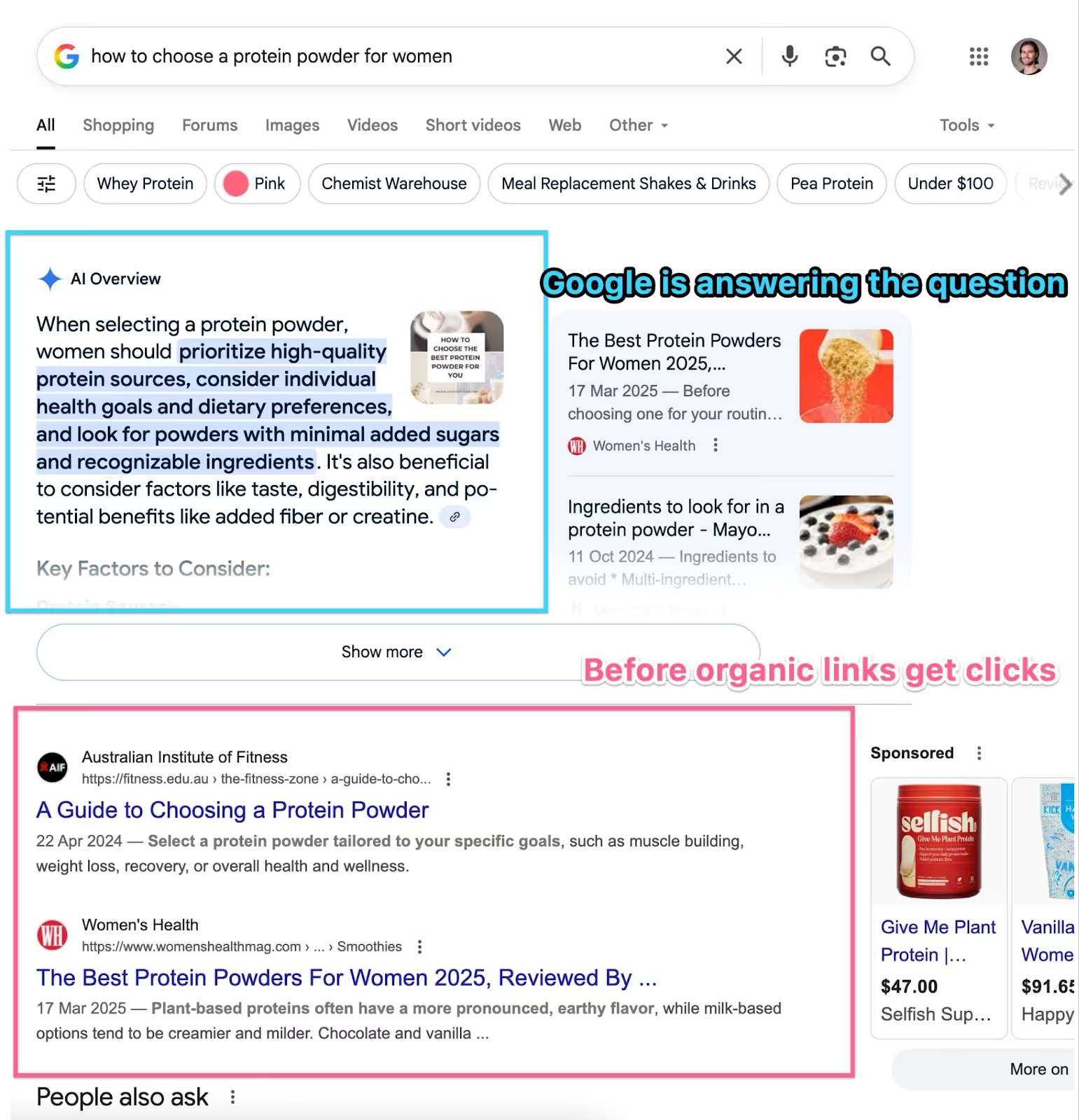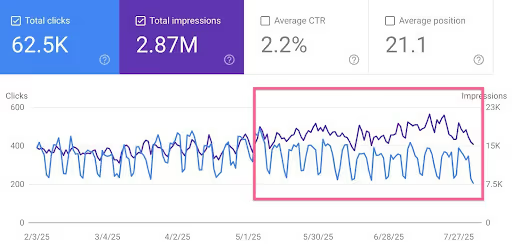Key Summary
- AI Overviews in Google Search provide instant answers, reducing the need to click through to websites.
- This is causing a rise in impressions but a drop in clicks - the core of “The Great Decoupling.”
- Businesses need to adjust their SEO and content strategies to stay visible and valuable.
- Long-tail keywords, structured content, and brand visibility are more important than ever.
- Consider balancing organic with paid media to maintain traffic while Google evolves.
What Is ‘The Great Decoupling’ in Google Search?
Coined by search experts observing a major shift, “The Great Decoupling” refers to the disconnect between search impressions (how often your site is seen in search results) and clicks (how often users visit your site). Previously, more impressions usually meant more clicks. But since Google began testing and rolling out AI-generated summaries at the top of search results, that equation has changed.
What Are AI Overviews and Why Do They Matter?
AI Overviews are Google’s way of summarising search results using AI. Instead of showing the typical list of blue links, some searches now display an AI-generated answer box that pulls from multiple sources - often satisfying the user’s query before they click anything.
For example, someone searching “how to choose a protein powder for women” might get a complete answer from Google’s AI, with product suggestions, buying tips, and sources - all in the search results page. That means fewer reasons for the user to click into your site.

Why Impressions Are Up but Clicks Are Down
AI Overviews take up prime real estate at the top of the search page, often pushing traditional organic listings down. Your site might still be referenced in the AI summary or further down the page, hence the increased impressions. But with the answer already in front of the user, they’re less likely to click - hence the decline in CTR (click-through rate).
This decoupling is not theoretical - it’s already being observed in live data from tools like Ahrefs and Google Search Console.

What This Means for Small and Medium Businesses
For businesses with limited time and budget, this trend can feel discouraging. You've followed SEO best practices, created valuable content, and earned your place on Google - only to see less traffic come through.
But here’s the good news: there are practical steps you can take. While some clicks are lost to AI, there’s still opportunity to earn trust, visibility, and conversions - if you play it smart.
How to Adapt Your SEO and Content Strategy
- Double down on long-tail keywords.
Focus on highly specific queries where users still need detailed content - things like “how to build a greenhouse in Melbourne under $500.” For queries like this, users are more likely to seek a long form piece of content than what is allowed in the character limit of AI Overviews. This content is likely to be saved and viewed on various occasions. - Optimise for inclusion in AI summaries.
Structure your content with clear answers, bullet points, and schema markup. Google is more likely to pull content that’s clear, authoritative, and well-formatted. This will help you to appear as a referenced resource in the AI summary. - Make your brand stand out and use clear USPs.
Build trust with your audience through branding, reviews, and unique selling points - so even if users see an AI summary, it might pick up on extra reasons why you should be chosen. For example, if someone is searching for the ‘best electric bike under $1,000 with the highest range’ make sure to include the range, price and other key selling points to give your product or article the highest chance of appearing - you don’t need a click during the research phase to get a sale! - Use first-party data to your advantage.
Build your email list and focus on owned channels, where you control the conversation. Build your own audience so that you’re not as reliant on the big channels.
Should You Shift Budget from SEO to Paid Channels?
Short answer: maybe. While SEO remains foundational, many businesses are reallocating some spend to paid channels like Google Ads and Meta Ads to compensate for the drop in organic traffic.
Use analytics to assess your ROI. If certain keywords are no longer driving results organically, consider bidding on them via paid search - especially if they’re high-converting.
This may help to tame some of your lost traffic, however this shouldn't be goodbye to SEO. You should re-think your SEO strategy (with the above tips) and consider other SEO channels like TikTok and ChatGPT.
Final Thoughts: Staying Visible in the Age of AI Search
AI Overviews are part of a bigger shift in how users search - and how platforms deliver information. The good news? With smart strategy and a nimble mindset, small and medium businesses can still thrive. The key is to adapt early, monitor performance closely, and keep showing up where your customers are.
Remember, this isn’t the end of search - it’s just the next chapter.
FAQs
Q: Is SEO still worth investing in?
Yes - but it’s evolving. Focus on high-value, clear, structured content and branding.
Q: How can I see if this is affecting my site?
Check your Google Search Console data. Look for rising impressions and falling CTR.
Q: Should I stop writing blog posts?
No - blog posts help with branding, visibility, and inclusion in AI summaries.
Q: Are paid ads now a must-have?
They’re becoming more important. Consider them as part of a balanced strategy.
This guide is written by Hedgehog, a ‘Done With You’ digital marketing consultancy specialising in small and medium businesses in Australia. We offer digital marketing strategy, planning, training and implementation.





.avif)

